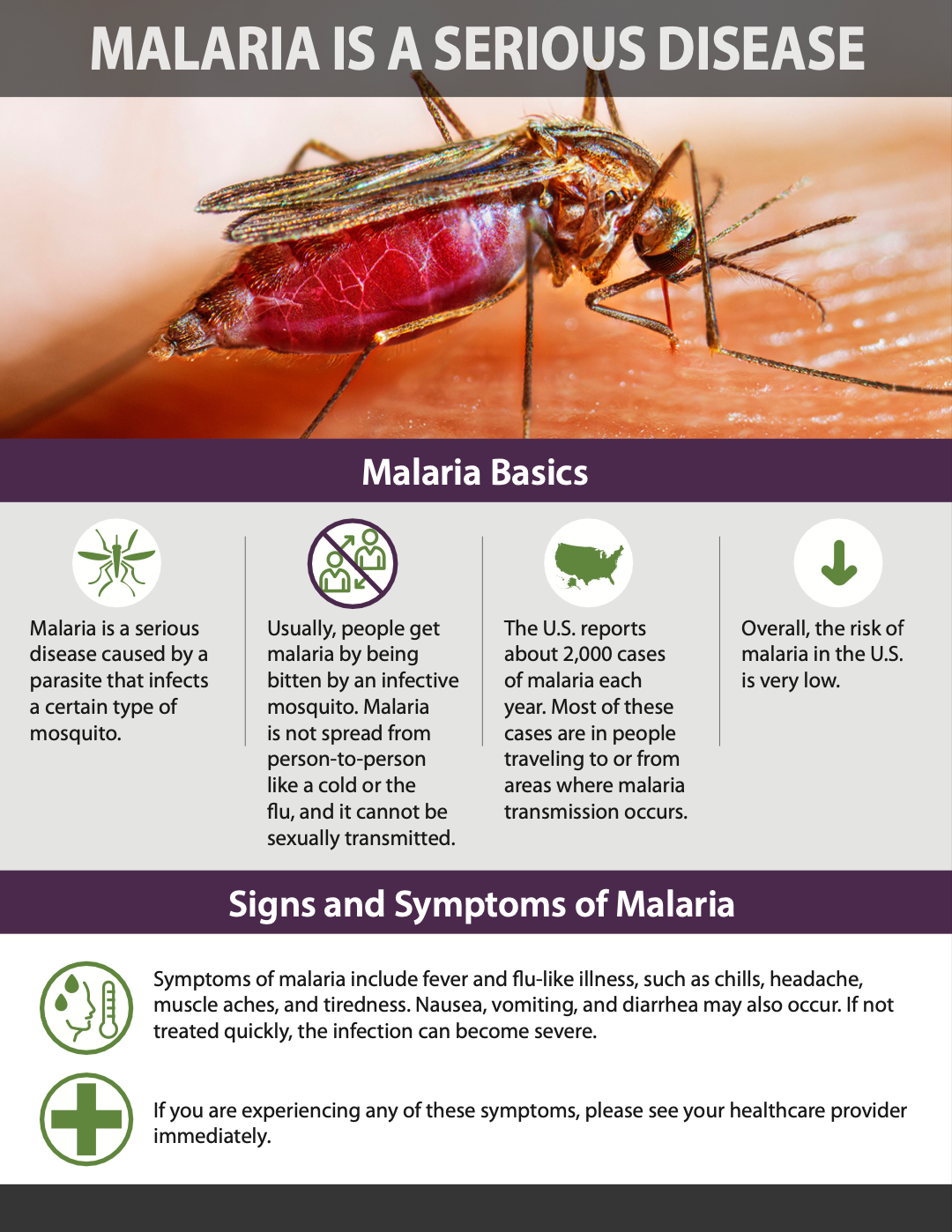News
Article
Are conditions right for malaria to make a comeback in the United States?
Author(s):
Researchers warn 8 recent cases could hint at things to come, so physicians must be aware.
© U.S. Centers for Disease Control and Prevention

Physicians should add malaria to the list of maladies they check on when patients come in sick.
Malaria has been eliminated from the United States since the 1950s, with about 2,000 annual cases in patients who brought it back from overseas travel. But that could change due to warming temperatures and trekking around the world, according to public health experts.
“Between increased international travel since the end of the COVID-19 pandemic, global warming, and evidence of geographic expansion of many mosquito populations, the potential for the introduction and spread of vector-borne diseases such as malaria, dengue, and chikungunya is increasing,” Davidson Hamer, MD, FACP, said in a news release.
Hamer is professor of global health and medicine at Boston University School of Public Health and BU Chobanian & Avedisian School of Medicine, and an attending physician at Boston Medical Center. He also is corresponding author of a new warning for physicians coauthored with researchers for the U.S. Centers for Disease Control & Prevention (CDC); IRCCS Sacro Cuore Don Calabria Hospital in Negrar, Italy; and McGill University Health Center in Montreal, Canada.
Davidson Hamer, MD, FACP
Boston University School of Public Health

Around the globe
Thriving in warm conditions, malaria still is present in parts of Central and South America, Asia, Eastern Europe, and the South Pacific. Africa accounts for 95% of more than 240 million cases reported each year worldwide, according to CDC.
Despite millions of cases, there’s been a slow-down in work to stop the spread around the world, the researchers said. They suggested conditions are right for malaria to return to the United States.
It was national news this summer when eight new cases of malaria were reported; one in Texas was not related to seven in Florida, the researchers said. Those cases were the first locally acquired since eight cases were identified in Palm Beach County, Florida, in 2003, according to CDC. The patients have recovered, the researchers said, and since mid-July, no new cases have been discovered in the United States.
What to look for
Malaria causes flu-like symptoms but can cause serious illness or death if it is not treated. The researchers said malaria is not necessarily a rare “zebra” diagnosis and physicians and other clinicians should know how to recognize, diagnose, and treat it.
“Clinicians need to take a travel history from their patients but also need to be aware of the potential for local transmission of pathogens that may not have been seen in their communities for decades,” Hamer said. “We have good diagnostic tools available for diseases such as malaria, but unless a clinician thinks about this possible diagnosis, it will be missed.”
As for symptoms, clinical manifestations of malaria are nonspecific and include fever, chills, headache, myalgias, and fatigue. Nausea, vomiting, and diarrhea are possible, according to CDC. The federal agency has published recommendations for clinicians, hospitals and laboratories, public health agencies, and the public. There are online treatment guidelines and reporting instructions, and other resources.
“A Zebra Among the Horses: Clinical Implications of Malaria in the United States,” was published in Annals of Internal Medicine.




